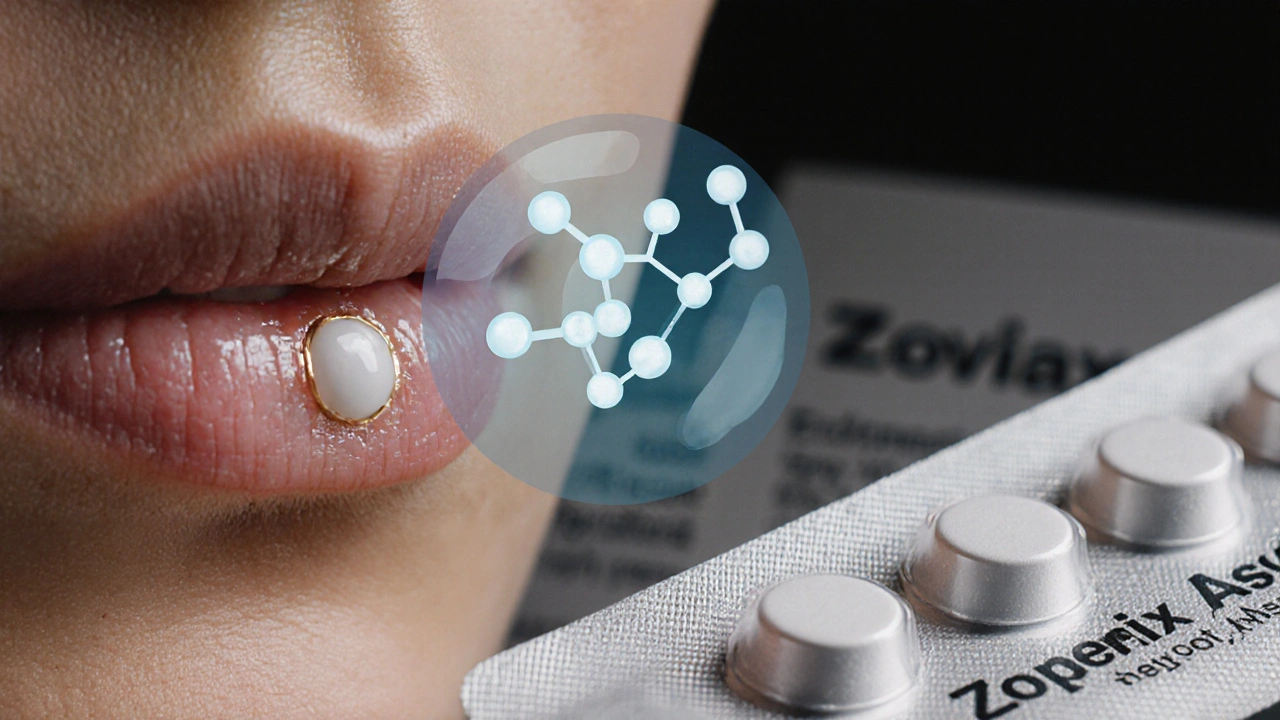

When working with acyclovir, a nucleoside‑analog antiviral used to treat herpes‑related infections. Also known as Zovirax, it blocks viral DNA replication and speeds up healing. Most people hear about it when they get a cold sore or a painful shingles rash, but the drug actually covers a wide range of viral illnesses. In everyday practice, doctors prescribe it to stop the virus in its tracks, keep outbreaks short, and lower the chance of spreading to others. Think of acyclovir as the key that stops the virus’s engine – once it’s turned off, the body’s immune system can finish the job.
The two main foes acyclovir fights are herpes simplex virus, the virus that causes cold sores and genital lesions and varicella‑zoster virus, the virus responsible for chickenpox and shingles. Both belong to the herpesvirus family, which means they hide in nerve cells and can reactivate later. Acyclovir’s job is simple: it mimics the building blocks of viral DNA, gets incorporated during replication, and then stops the chain. This mechanism creates a clear semantic triple: acyclovir inhibits viral DNA polymerase. Because it targets a step common to both HSV and VZV, a single pill can treat multiple conditions, which is why you’ll often see it listed as a broad‑spectrum antiviral.
Besides the core viruses, clinicians also use acyclovir for less common infections like Epstein‑Barr virus‑related oral ulcers or cytomegalovirus in transplant patients, but those are off‑label uses. The drug’s flexibility comes from its ability to work in different body compartments – skin, mucous membranes, and even the central nervous system when given intravenously.
When deciding on treatment, doctors consider the infection type, severity, and patient factors. For example, a mild cold sore may only need a short 5‑day oral course, while a severe shingles outbreak in an older adult often calls for a longer regimen and sometimes an IV drip to ensure enough drug reaches the nerves.
These decisions illustrate another semantic connection: infection severity influences acyclovir dosage form. The choice of form—tablet, cream, or IV—directly reflects how aggressive the virus is and where it’s acting.
Patients can get acyclovir as a tablet, oral solid dosage providing systemic drug levels, a thin topical cream for skin lesions, or an intravenous solution for hospitalized cases. Oral tablets are the most common and come in 200 mg and 400 mg strengths. The typical adult dosing for genital herpes is 200 mg five times a day for 10 days, while shingles often requires 800 mg three times daily for 7‑10 days. Topical cream is usually applied five times a day for 4‑7 days, but it’s less effective for deep tissue infections.
Kidney function plays a big role in how you dose acyclovir. The drug is cleared almost entirely by the kidneys, so anyone with reduced renal clearance needs a lower dose or longer interval between doses. This creates a third semantic triple: impaired kidney function reduces acyclovir clearance. In practice, doctors will check creatinine clearance before starting therapy and adjust accordingly, especially in older adults or patients taking other nephrotoxic drugs.
Immunocompromised patients—those on chemotherapy, organ transplant recipients, or people with HIV—often need prophylactic acyclovir to keep the virus from reactivating. Here, the drug is taken at a lower daily dose for months or even years, showing that chronic use is safe for most people when monitored.
Most people tolerate acyclovir well. The most common side effects are mild stomach upset, headache, and occasional dizziness. Serious issues like kidney injury or blood‑cell problems are rare and usually linked to high IV doses or pre‑existing kidney disease. Staying hydrated while on the medication helps the kidneys flush out the drug faster, reducing the risk of toxicity.
If you miss a dose, take it as soon as you remember unless it’s almost time for the next one. Double‑dosing can increase side‑effect risk without improving effectiveness. Always finish the prescribed course, even if symptoms improve early—stopping too soon can let the virus bounce back.
Drug interactions are limited but worth noting. Acyclovir can increase the levels of drugs that also rely on kidney clearance, such as certain non‑steroidal anti‑inflammatory drugs (NSAIDs) and some antibiotics like trimethoprim‑sulfamethoxazole. To stay safe, let your pharmacist know about all medications you’re taking.
Overall, acyclovir is a reliable, affordable option for anyone dealing with herpes‑related outbreaks. Whether you’re battling a first‑time cold sore, managing frequent genital lesions, or coping with a painful shingles rash, the drug offers a clear pathway to faster recovery.
Below you’ll find a curated collection of articles that dive deeper into related health topics—from how climate change can affect immune‑compromised patients to detailed drug comparisons and practical guides on buying medicines online. These pieces complement the acyclovir overview by covering the broader landscape of viral infections, treatment choices, and patient‑focused strategies you might find useful as you navigate your health journey.

Learn how to safely buy cheap generic Zovirax online in the UK, covering legal checks, reputable pharmacies, price comparison, and step‑by‑step purchasing tips.